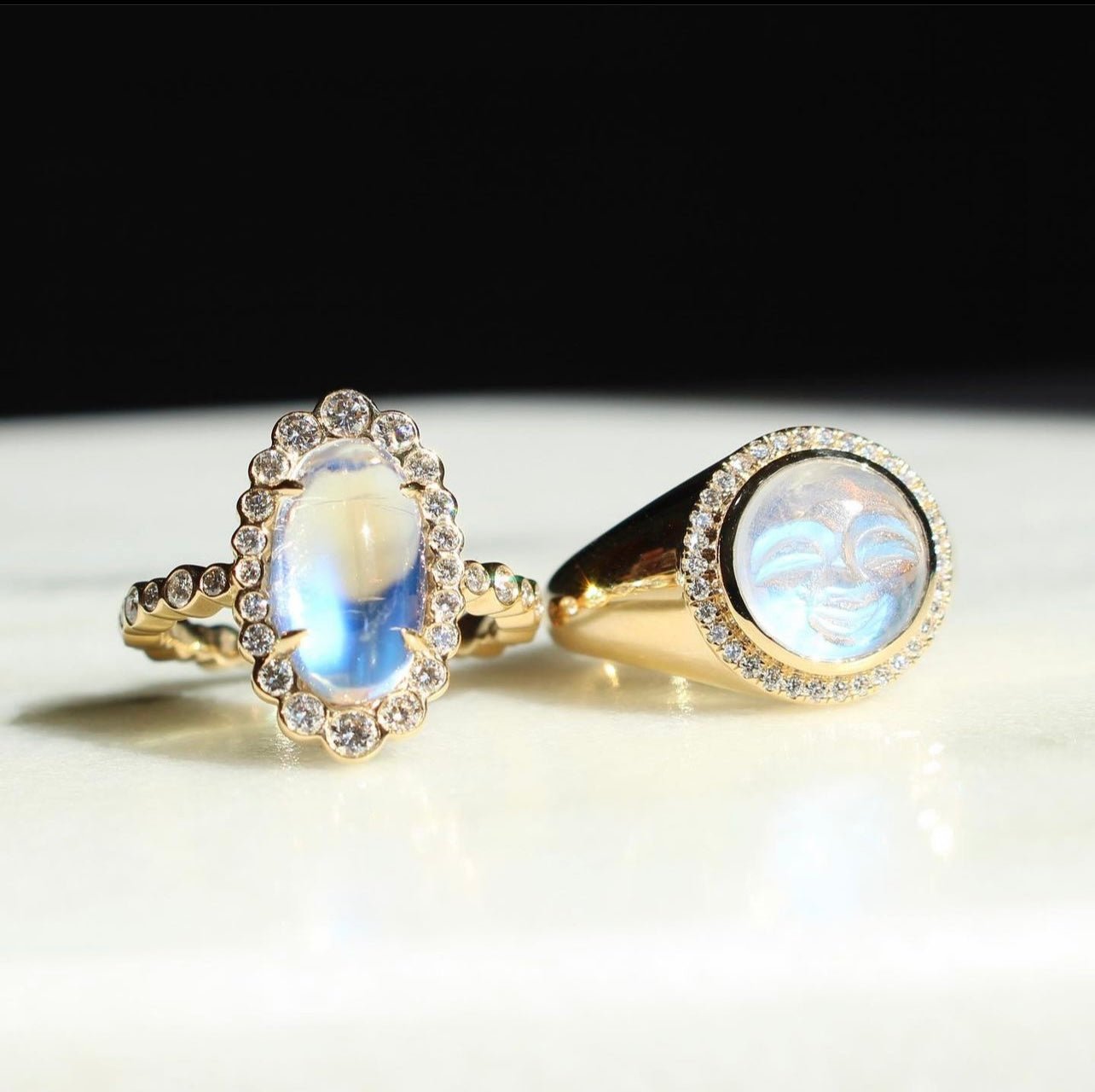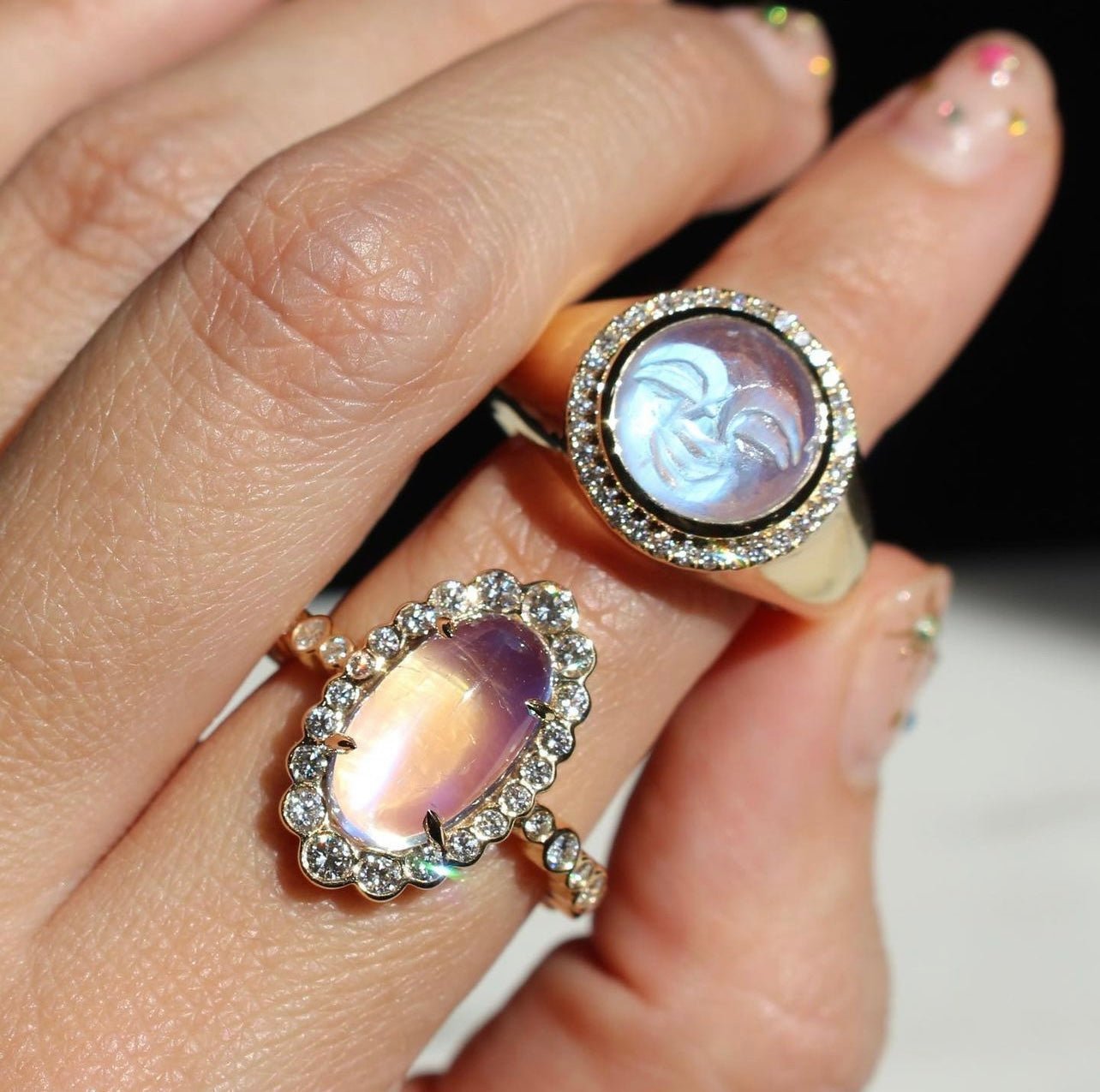[text]
Did you wear a mood ring in high school? So many of us made memories watching brilliant purples change into orange as we guessed what that meant about our day. What if we told you that there was a grownup version of the childhood trend, one all the more rare and beautiful?
Alexandrite is best known for its naturally occurring deep blue hue in daylight and its gorgeous reddish-purple by nightfall. The effect is so revered that the gemstone is one of the rarest and most sought after in the world from both jewelry and gem collectors alike.
At Mark Henry, we specialize in bringing you the purest alexandrite in partnership with an exclusive, family-owned mine in Brazil to guarantee that your jewelry is of the highest and rarest luxury value on the market.
Read on to learn more about what makes alexandrite so unique and desired.
Where Did Alexandrite Originate?
Alexandrite’s origins are just as stunning as its vibrant colors. A tale that includes a Czar, an assassination, and treasure hidden in a mountain range sounds like something out of a storybook.
[/text]
[text]

[/text]
Royal Values
In the 1830s, alexandrite was first found in the Ural Mountains of Russia. When Czar Alexander II was assassinated in 1881, the gem was named in his honor - he had freed Russia’s serfs a mere two decades earlier. By coincidence, the gem’s classic red and green colors matched those of Imperial Russia. This helped to propel its popularity in the region. At the time of alexandrite’s discovery, Russian royalty was similar to Britain’s Windsor family today. Their trend-setting abilities solidified alexandrite’s value.
Alexandrite Characteristics
The biggest factor of alexandrite’s rarity is its makeup.
Scientific Composition
Alexandrite is a member of the chrysoberyl gem species, which contains a collection of the third-hardest gemstones.
The gem is composed of beryllium (Be) and chromium (Cr), which are incredibly hard to find in the same rocks. Emerald requires these two elements as well, and beryllium is known as one of the rarest elements. Be and Cr occur in completely different conditions, adding to alexandrite’s rarity by composition alone.
This formula is one of chatoyancy, which helps to produce the reflective illusion of the gem shown in its change of color.
Other components include:
- - Chemistry: BeAl204
- - Hardness: 8.5 on a Mohs scale
- - Specific Gravity: 3.73
- - Birefringence: 0.008 - 0.010
- - Transparency: Ranges from opaque to clear.
- - Heat sensitivity.
While rare, the gem is surprisingly found in a multitude of forms.
It occurs in:
- - Pegmatites
- - Gneiss
- - Mica schist
- - Dolomitic marbles
- - Stream pebbles
- - Detrital grains
Color Changing Abilities Are Paramount
After the 1980s, alexandrite deposits became exceedingly difficult to find. Sri Lanka, East Africa, and Brazil are all homes to the gem, but they rarely produce pieces with the same color-changing abilities. Much of the gem’s allure is thanks to its shifting and duller versions of color decrease in monetary value. Sri Lankan alexandrite is more accessible than that in other regions, but its properties are not as bright, marking it down in demand. Alexandrites from Brazil have been found in colors that rival the Russian material, but production from Brazil has decreased. Currently, alexandrite supply is low, and fine-color material is extremely rare.
Rarity That Shocks
They say that diamonds are a girl’s best friend, but we beg to differ. Alexandrite is actually rarer than diamonds, which is reflected in its price tag. Mines that search for the gem are few, and high demand keeps market sales up.
Monetary Value
It seems as though the gem’s true value is just coming to pass, with a 2015 Sotheby’s Magnificent Jewels New York auction selling a Ceylon Alexandrite for over four times its previous value at $754,000.
In 2014, a 21-carat Russian alexandrite sold for $1.325 million Swiss Francs from Geneva Magnificent Jewels, despite only being valued between $450-650,000 Swiss Francs. This sharp increase is due to a rush of jewelry collectors understanding the staple-piece ability of the gem.
A Staple Piece That Stands Out
As with every gem, practical purpose must overshadow beauty. Alexandrite does not disappoint when it comes to jewelry. It is low maintenance, durable, and dazzling - all factors that justify a higher cost.
Production Qualities
Alexandrite that is of the best quality must be left untreated. It does not have inclusions, and it is not marked with any indication of blemishes. It can be sensitive to extreme heat but fares well in a temperate climate.
Knocking the gem around harshly can damage it, but traditional wear and tear will rarely show. With a Mohs hardness of 8.5, it is incredibly durable.
Wearability and Versatility
The gem itself is one of the best staple pieces for any jewelry collection or wardrobe. It compliments everyone with its range of color and style. Alexandrite fits just as well in a necklace as a ring or bracelet.
Its weathering characteristics present a natural lifetime guarantee, making any purchase one that can be passed down for generation. It can be worn frequently and without much maintenance, as it is resistant to scratches from its hardness.
Pleochroism can be difficult for jewelers to cut into. Displaying the brightest and most reflective pieces of an alexandrite gem is paramount when shaping the stone. This piece is placed at the crown, where it is most likely to be seen, and always facing upwards. Meticulous craftsmanship marks the work of good alexandrite jewelry.
Mixed and brilliant cuts are typically used for the gem, including the step cut and oval shape. This allows for more of the reflective light to naturally occur and be showcased.
Birthstone Status
In the 1950s, alexandrite was added to the June collection of birthstones. It sits beside moonstone and pearl, shining its brilliant greens and reds with two opalescent stones. This increases the reason for investing in alexandrite. It works perfectly for a birthday gift as the months become warmer!
How Mark Henry Works This Precious Gem
At Mark Henry, we consider alexandrite our specialty. We understand that you want versatile and unique gems that stand out in a crowd and are worth investment. That is why we focus so much of our attention on rare and exotic gemstones, and advocate for their renowned qualities.
Family-Focused Mining
All of our alexandrite comes from an intimate, family-run mine in Brazil, which we have been partnered with since our inception as a business in 2004. Located in the southeast region of the country, this mine operates under fair practices only and allows for an open dialogue between us and our customers. From the cultivation of the gem to its placement on your ring finger, our alexandrite is monitored and treated by only the best. With Mark Henry, there is no speculation of what type of gem you are receiving. Every single piece of alexandrite jewelry we make comes with a certificate of authenticity signed by a geologist verifying it as either “raw” (a naturally sourced gemstone) or “natural” (from a third-party gem lab). This ensures that your new piece maintains its values with no questions asked.
Emphasis on Raw
Our alexandrite collection is ever-changing, just like the colors on the gem itself. Since we work with raw and rich products, our Brazilian alexandrite is always among the brightest of our offerings. We understand the importance of preserving such a rare gem and caring for it in all of our practices before we pass it along for you to enjoy.
Our Single Droplet Alexandrite Ring represents a culmination of our studies in alexandrite. A petite yet exquisite round alexandrite gemstone sits inside a delicate droplet motif, sure to light up a room and your jewelry collection in an instant.
Perfect as a gift for your loved one with a June birthday or maybe even as a treat for yourself, the Single Droplet Alexandrite Ring boasts a band that is light enough to stack with other rings as well as to balance out the weight of each gem. Remember - the heavier the alexandrite, the better the quality and the rarer!
Reflection of Company Values
Our passion for exotic, luxury gems is a driving force behind our work. Yet, it is hard to miss the deep correlation between the qualities of alexandrite itself and our business.
The dichotomy and versatility of alexandrite mimics our own experiences bringing fine jewelry to the public. We must balance and blend our partnerships with ethical mines, our loyalty to the needs of our customers, our creativity through innovative design, our respect for classic jewelry collectors, and our mission to share the educational tools we have acquired in profiling gems across the world.
Alexandrite symbolizes love and fulfillment, qualities that we hope to share with our customers in return. Connection is an integral part of our work, and this gem encapsulates that vibrant, welcoming nature. Alexandrite dares to be bold in the same way that we dare to work with it.
[row::raw-alexandrite-featured-products::Shop The Collection]
Sources:
Alexandrite Gemstone Natural Alexandrite Stone | GIA
Alexandrite Value, Price, and Jewelry Information | Gem Society


